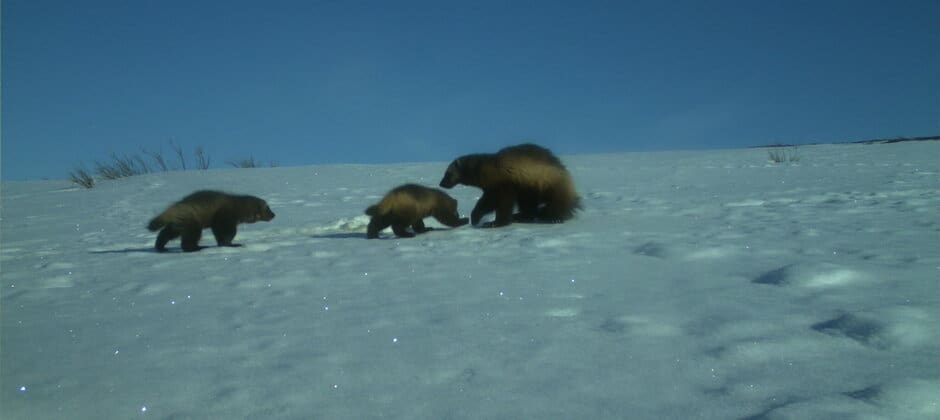Share this article
Wolverines den in caves formed in permafrost
Wolverines use deep fissures in the Arctic permafrost as dens, photos have revealed.
“After we found three of them, it seemed like enough of a pattern to start sharing it,” said Tom Glass, a researcher with the Wildlife Conservation Society and a PhD student at the University of Alaska Fairbanks.
Glass and his colleagues were working on a larger project looking at how wolverines (Gulo gulo) dug burrows in the snow for denning and food caching in the northern slope of Alaska.
The researchers had live-trapped wolverines and fitted them with GPS collars to track their movements. During the course of their observations, they discovered the animals were using peculiar features in the permafrost. They described their findings recently in Ecology.
In some areas in the Arctic, permafrost forms in polygon-shaped ice wedges. In areas where these multi-sided shapes of ice melt, they can create temporary caves. Some of these caves can be about 15 square meters, with ceilings up to 45 centimeters high at their tallest point.
The team found the first one in an area that appeared pretty unremarkable on the surface. The researchers initially thought they were just burrows in the snow, but measurements showed they were much deeper. When the scientists excavated a bit, they found the hole went down into a subterranean passage in the permafrost.
Credit: Tom Glass/Wildlife Conservation Society
In all, they found that wolverines used three of these permafrost caves. One mustelid used two of the caves as resting places.
But after placing a trail camera at the mouth of the third, researchers captured photos of a wolverine family using it as a den.
The team also observed other animals like a grizzly bear (Ursus arctos horribilis) and a red fox (Vulpes vulpes) checking the den out on the footage. Glass said it’s possible that these or other animals also make use of the caves, but they didn’t capture any footage of that happening.
The permafrost dens are created by natural melting, but Glass said that climate change is likely shifting the dynamics of their formation.
“The caves are probably becoming more common,” Glass said, adding that permafrost is also degrading more in general due to warmer winters.
The discovery also adds to the knowledge about how wolverines use the landscape. Glass said that less than two dozen reproductive dens have been found in the Arctic tundra in Alaska. The discovery of a new feature the mustelids use is important for better understanding their life history in the area, and what the animals may need for conservation.
Header Image: A mother and two kits at the entrance of a den in Arctic Alaska. Researchers have found that some wolverines (not those pictured) may use permafrost caves as dens. Credit: Tom Glass/Wildlife Conservation Society








